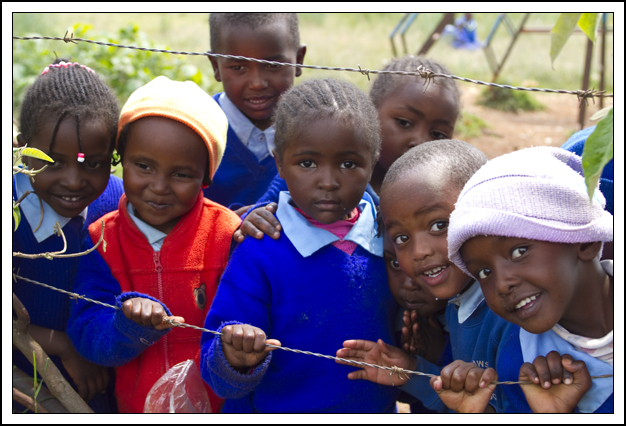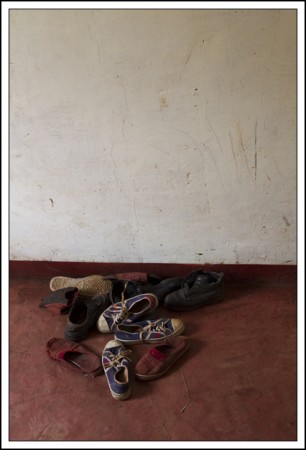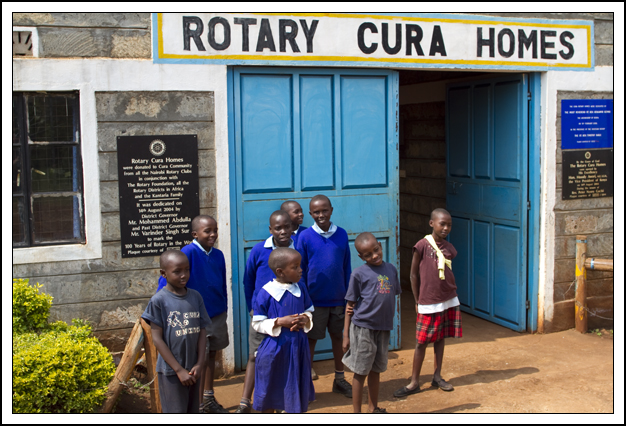As you can probably tell, I was kind of smitten with the kids at the Cura orphanage. Pete and I planned on being out there for an hour or two but after three hours, neither one of us was ready to head back to our hotel, despite the fact we hadn’t slept in 36 hours and were running on fumes.
I was curious about what sort of meals the housemothers were able to make for the kids. Moses told me that they pretty much have the same menu every week. Their main meal goes something like this:
They have a bean and potato stew once a week (that’s what they were eating when we were there). Twice a week they have a traditional Kikuyu dish called githeri which is a combination of beans and corn with maybe a little chopped cabbage added to it, and on Sundays, when they’re lucky, they get a little piece of meat.
The orphanage is also lucky in that they have a shamba, or small vegetable garden, right next door that is fertilized by Norman. Norman isn’t the gardener but a very pregnant cow (I have no idea why they named a cow Norman) that, since June, also provides the orphanage with milk, saving them about $40 a month. Norman has a very nice livestock shed next to the shamba that was built by volunteers and upstairs from Norman’s digs is a new chicken coop where a hundred or so hens have only recently started to lay eggs.
As a result, the kids at the orphanage now get chapatis with eggs or chicken once a week as well. And, of course, the chicken manure also goes to fertilize the shamba. So this is a pretty damn green orphanage (and maybe the first Slow Food orphanage in the world).
I can’t say that I’m the most philanthropic-oriented person in the world (in fact, I’m probably one of the worst), but watching these bright-eyed kids wolf down their beans and potatoes, I had to ask Moses how much it cost to feed them every day. A $1.76, he said. Not “About two dollars” or “Just a couple of dollars a day,” but one dollar and seventy-six cents. Exactly. When someone tells you that, you know they’ve got their budget figured out to the penny.
The fact of the matter is, Moses told us, the orphanage was built to house 150 kids. But they only have 50 right now because that’s all they can afford to feed and clothe and educate. But if a few more people wanted to sponsor a child to the tune of $52.80 a month, they could take in more orphaned kids. I’m not saying you should think about sponsoring a Cura orphan. I’m not even saying that I will. Not for sure, anyway. I’m just saying that if you’re curious, like I was, and would like more information, you could always check out the Cura Orphanage here.








Recent Comments